© Bright Sparks Sports Lighting 2025
Floodlighting Planning Guide
We will design and install an efficient, cost effective lighting solution to fulfil your requirements. Lighting design is a highly technical part of any
lighting system enabling councils to see the impact on the surrounding area before an installation is carried out.
Our lighting plots will show luminous intensity ( LUX ) maintained levels achieved, Uniformity of the illuminated area ( the evenness of the light )
and light spillage ( the impact We on the surrounding area ).
It is getting more and more common that an application for floodlighting will be refused. This can be because of many factors including light
pollution, visual impact and the effects on surrounding property.
We will try to guide you towards a successful planning application.
Floodlighting is frequently requested for sports facilities to enable them to be used on winter evenings for training competition; to enable an
expensive facility such as an artificial Turf Pitch to be more viable and justify the level of capital investment to enable more people to participate
and give more choice and flexibility of playing time.
There have been significant advances made in the design and maintenance of floodlighting systems. The site should be able to accommodate any
necessary lighting without undue intrusion or significant adverse impact upon the immediate locality or wider environment. The reasoned
justification to the policy refers to the need for environmental safeguards and measures to protect residential amenity and maintain highway
safety. Light pollution can be a problem in both urban and rural areas. Residential amenity aspects will be most significant in an urban area, whilst
sky glow may be the most significant impact in a rural area. The Department of the Environment and the Countryside Commission in 1997
produced a Good Practice Guide Lighting in the Countryside. Towards Good Practice, which provides practical advice on the prevention and control
of lighting impacts through appropriate action by all those involved with lighting in the countryside. The guide suggests that Local Planning
Authorities should recognise the cumulative impacts of lighting on countryside character and consider the need for policies on lighting in the
development plan and for supplementary planning guidance to elucidate these policies. Much of the advice in the Good Practice Guide is
applicable to urban and suburban areas as well as the countryside.
The Sports Council has also produced Guidance Notes to advise potential developers of floodlit sports facilities on the issues they should consider
in order to reduce the potential effect on the local environment. Different sports require different levels of light. The lighting requirements for
individual sports are set out in the Sports Council Guidance Notes.
Lighting in the Countryside
There is growing concern that excessive lighting on rural roads, village streets and in other areas of the countryside can lead to sky glow which
shuts out the splendour of the night sky and lighting apparatus can be visually intrusive in daytime. There can be a subtle cumulative effect on the
character of rural landscapes that tends to blur the distinction between urban and rural area. Two key considerations are identified in the DOE/CC
1997 Good Practice Guide, the importance of countryside character and the need to minimise the use of lighting and its impacts.
Lighting in Urban Areas
Although the apparatus associated with floodlighting is often more readily assimilated in urban areas, and the wider impact of the light generated
less intrusive, particular problems can occur in respect of residential amenity. The proximity of housing and the way in which the floodlighting and
use of the site impacts on the amenities enjoyed by the occupiers will be an important factor in determining the acceptability of proposals.
Proposals for floodlighting of sports facilities will be permitted where:-
1 There is no significant adverse impact on the landscape character in terms of the sensitivity of a given area to the introduction of exterior lighting
(night-time) the effect of lighting on the visual character of the landscape or built environment in terms of siting and the existing landform (day-
time) the effect on historical or wildlife features the design of new planting and landscaping proposals
2 There is no significant adverse impact on the visual amenity of residents.
3 The safety of transport users is not adversely affected.
4 The proposal does not represent an unacceptably adverse intensification of use of the application site. In addition there may be a need to
consider the impact on special interest groups such as astronomers.
The Borough Council may impose planning conditions to influence the design of lighting installations and to mitigate their impacts.
A] Night-time Impact
Areas with the presence of dark skies such as remote or undeveloped areas of countryside will be particularly sensitive to light intrusion. The
Institute of Lighting Engineers in their Guidance Notes for the reduction of Light Pollution give examples of environmental zones. The presence of
existing lighting in the locality will be examined.
B] Day-time
The effect on sky-lines, key views and on landscape character generally will be looked at. The siting of lighting is of particular importance e.g.
concentrating lights in one part of the site, screening key views and giving careful consideration to the treatment of the boundaries of any
development. The existing topography or land form varies in its ability to accommodate lighting. A relatively flat landform and well developed
hedgerows may contain views, but cannot screen sky glow. Rolling landforms may reduce the impacts of lighting but dark upland areas will be
particularly sensitive in terms of light pollution.
C] Historical or Wildlife Features
The presence of conservation areas, listed buildings, nature reserves or areas of wildlife interest which may be adversely affected will be taken into
account.
D] Landscaping
Landscaping proposals such as allowing existing hedges to grow, the planting of new hedges and internal planting within a site may screen some of
the impacts of new lighting. Care must be taken though not to adversely alter the existing landscape character or block important local views.
Applicants will therefore need to demonstrate how use of the existing land form, or landscaping proposals will mitigate the impact of the proposal.
Sports floodlights tend to be tall and may be intrusive in visual terms. There are advantages in mounting the lamp as high as possible so that its
light can be directed downwards, minimising glare and sky glow. However, tall masts may be visually intrusive during the day-time. The following
principles should therefore be considered as advocated in the DOE/CC guide: consider potential for temporary floodlighting and for lowering light
columns in summer when they are not in use. Also using the minimum number of light required to minimise light pollution.
2 Residential Visual Amenity Aspects
Residential amenity aspects will be particularly important in urban areas. Distances between the proposed lighting and the boundaries of
residential curtilages will be examined. The amount of light falling on a surface is known as the luminance and is measured in lumens per square
metre or lux. The strength of light in a given direction is referred to by engineers as luminous intensity and this is measured in candelas. Light spill
from a misdirected source can be distracting and annoying and can destroy a sense of privacy, especially where bedrooms may be effected by
increased light levels at night.
3 Transport Safety
The relevant highway authority will be consulted regarding any increased luminance caused by the proposed lighting and the possible effects of
glare on road users. Glare from excessively bright or poorly aimed lights causes dazzle, with safety implications for motorists and pedestrians,
particularly the elderly.
4 Intensification of Use
The provision of floodlighting often involves an intensification of use. The use to which a floodlit area is put can have a considerable impact on the
amenity of the surrounding area. There will be a considerable difference between a facility used for training purposes, or just by the participants in
a sport and a use which attracts large numbers of spectators. The other aspects of intensification such as noise, access and car parking are
addressed by other Development Control policies but remain valid concerns for assessing any floodlighting proposals.
5 Special Interest Groups
British astronomers have been particularly affected by the impact of light pollution on the night sky. The activities of astronomers are affected most
by sky glow, but light trespass and glare may also cause severe problems if they are close by.
6 Conditions
Conditions may cover such matters as: luminaries effects. These matters and the issues raised in this policy guidance need to be addressed in any
planning applications submitted to the Borough Council. Applicants are advised to consult the relevant lighting experts before submitting a
scheme. The DOE/CC Good Practice Guide provides useful information on issues to consider in the scheme preparation of lighting installations. The
Institute of Lighting Engineer Guidance Notes for the Reduction of Light Pollution 1994 and the Sports Council Guidance Notes Floodlighting 1994
and Facilities Fact file 2, Floodlighting for Sport also provides useful information.


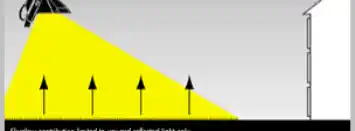
Call 01625 876716


© Bright Sparks Sports Lighting 2025
Floodlighting Planning Guide
We will design and install an efficient, cost effective lighting
solution to fulfil your requirements. Lighting design is a highly
technical part of any
lighting system enabling councils to see the impact on the
surrounding area before an installation is carried out.
Our lighting plots will show luminous intensity ( LUX )
maintained levels achieved, Uniformity of the illuminated area
( the evenness of the light )
and light spillage ( the impact We on the surrounding area ).
It is getting more and more common that an application for
floodlighting will be refused. This can be because of many
factors including light pollution, visual impact and the effects
on surrounding property.
We will try to guide you towards a successful planning
application.
Floodlighting is frequently requested for sports facilities to
enable them to be used on winter evenings for training
competition; to enable an
expensive facility such as an artificial Turf Pitch to be more
viable and justify the level of capital investment to enable
more people to participate and give more choice and flexibility
of playing time.
There have been significant advances made in the design and
maintenance of floodlighting systems. The site should be able
to accommodate any necessary lighting without undue
intrusion or significant adverse impact upon the immediate
locality or wider environment. The reasoned justification to the
policy refers to the need for environmental safeguards and
measures to protect residential amenity and maintain highway
safety.
Light pollution can be a problem in both urban and rural
areas. Residential amenity aspects will be most significant in
an urban area, whilst sky glow may be the most significant
impact in a rural area. The Department of the Environment
and the Countryside Commission in 1997 produced a Good
Practice Guide Lighting in the Countryside. Towards Good
Practice, which provides practical advice on the prevention
and control of lighting impacts through appropriate action by
all those involved with lighting in the countryside. The guide
suggests that Local Planning
Authorities should recognise the cumulative impacts of
lighting on countryside character and consider the need for
policies on lighting in the development plan and for
supplementary planning guidance to elucidate these policies.
Much of the advice in the Good Practice Guide is applicable
to urban and suburban areas as well as the countryside.
The Sports Council has also produced Guidance Notes to
advise potential developers of floodlit sports facilities on the
issues they should consider in order to reduce the potential
effect on the local environment. Different sports require
different levels of light. The lighting requirements for individual
sports are set out in the Sports Council Guidance Notes.
Lighting in the Countryside
There is growing concern that excessive lighting on rural
roads, village streets and in other areas of the countryside
can lead to sky glow which
shuts out the splendour of the night sky and lighting apparatus
can be visually intrusive in daytime. There can be a subtle
cumulative effect on the character of rural landscapes that
tends to blur the distinction between urban and rural area.
Two key considerations are identified in the DOE/CC 1997
Good Practice Guide, the importance of countryside character
and the need to minimise the use of lighting and its impacts.
Lighting in Urban Areas
Although the apparatus associated with floodlighting is often
more readily assimilated in urban areas, and the wider impact
of the light generated less intrusive, particular problems can
occur in respect of residential amenity. The proximity of
housing and the way in which the floodlighting and use of the
site impacts on the amenities enjoyed by the occupiers will be
an important factor in determining the acceptability of
proposals.
Proposals for floodlighting of sports facilities will be permitted
where:-
1 There is no significant adverse impact on the landscape
character in terms of the sensitivity of a given area to the
introduction of exterior lighting (night-time) the effect of
lighting on the visual character of the landscape or built
environment in terms of siting and the existing land form (day-
time) the effect on historical or wildlife features the design of
new planting and landscaping proposals.
2 There is no significant adverse impact on the visual amenity
of residents.
3 The safety of transport users is not adversely affected.
4 The proposal does not represent an unacceptably adverse
intensification of use of the application site. In addition there
may be a need to consider the impact on special interest
groups such as astronomers.
The Borough Council may impose planning conditions to
influence the design of lighting installations and to mitigate
their impacts.
A] Night-time Impact
Areas with the presence of dark skies such as remote or
undeveloped areas of countryside will be particularly sensitive
to light intrusion. The
Institute of Lighting Engineers in their Guidance Notes for the
reduction of Light Pollution give examples of environmental
zones. The presence of existing lighting in the locality will be
examined.
B] Day-time
The effect on sky-lines, key views and on landscape character
generally will be looked at. The sighting of lighting is of
particular importance e.g.
concentrating lights in one part of the site, screening key
views and giving careful consideration to the treatment of the
boundaries of any
development. The existing topography or land form varies in
its ability to accommodate lighting. A relatively flat land form
and well developed
hedgerows may contain views, but cannot screen sky glow.
Rolling landforms may reduce the impacts of lighting but dark
upland areas will be particularly sensitive in terms of light
pollution.
C] Historical or Wildlife Features
The presence of conservation areas, listed buildings, nature
reserves or areas of wildlife interest which may be adversely
affected will be taken into account.
D] Landscaping
Landscaping proposals such as allowing existing hedges to
grow, the planting of new hedges and internal planting within
a site may screen some of the impacts of new lighting. Care
must be taken though not to adversely alter the existing
landscape character or block important local views.
Applicants will therefore need to demonstrate how use of the
existing land form, or landscaping proposals will mitigate the
impact of the proposal.
Sports floodlights tend to be tall and may be intrusive in visual
terms. There are advantages in mounting the lamp as high as
possible so that its light can be directed downwards,
minimising glare and sky glow. However, tall masts may be
visually intrusive during the day-time. The following principles
should therefore be considered as advocated in the DOE/CC
guide: consider potential for temporary floodlighting and for
lowering light columns in summer when they are not in use.
Also using the minimum number of light required to minimise
light pollution.
2 Residential Visual Amenity Aspects
Residential amenity aspects will be particularly important in
urban areas. Distances between the proposed lighting and the
boundaries of
residential curtilages will be examined. The amount of light
falling on a surface is known as the luminance and is
measured in lumens per square metre or lux. The strength of
light in a given direction is referred to by engineers as
luminous intensity and this is measured in candelas. Light spill
from a misdirected source can be distracting and annoying
and can destroy a sense of privacy, especially where
bedrooms may be effected by increased light levels at night.
3 Transport Safety
The relevant highway authority will be consulted regarding
any increased luminance caused by the proposed lighting and
the possible effects of glare on road users. Glare from
excessively bright or poorly aimed lights causes dazzle, with
safety implications for motorists and pedestrians, particularly
the elderly.
4 Intensification of Use
The provision of floodlighting often involves an intensification
of use. The use to which a floodlit area is put can have a
considerable impact on the amenity of the surrounding area.
There will be a considerable difference between a facility used
for training purposes, or just by the participants in a sport and
a use which attracts large numbers of spectators. The other
aspects of intensification such as noise, access and car
parking are
addressed by other Development Control policies but remain
valid concerns for assessing any floodlighting proposals.
5 Special Interest Groups
British astronomers have been particularly affected by the
impact of light pollution on the night sky. The activities of
astronomers are affected most by sky glow, but light trespass
and glare may also cause severe problems if they are close
by.
6 Conditions
Conditions may cover such matters as: luminaries effects.
These matters and the issues raised in this policy guidance
need to be addressed in any planning applications submitted
to the Borough Council. Applicants are advised to consult the
relevant lighting experts before submitting a scheme. The
DOE/CC Good Practice Guide provides useful information on
issues to consider in the scheme preparation of lighting
installations. The Institute of Lighting Engineer Guidance
Notes for the Reduction of Light Pollution 1994 and the Sports
Council Guidance Notes Floodlighting 1994 and Facilities
Fact file 2, Floodlighting for Sport also provides useful
information.
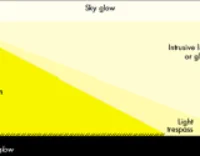
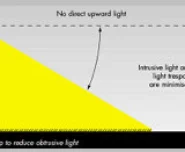
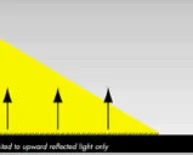

Call 01625 876716


